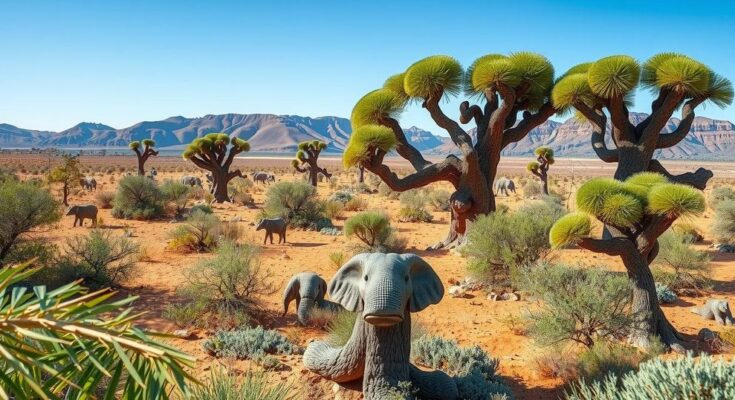The article discusses the significant role of small trees and shrubs in carbon sequestration within Namibia’s dry woodlands. A recent study reveals that these smaller plants contribute nearly one-third of the total woody biomass, challenging traditional carbon assessments that focus solely on large trees. This oversight not only leads to underestimations of carbon storage potential but also impacts climate policies and funding opportunities. The study advocates for improved assessment methods to recognize the comprehensive carbon contribution of all woodland vegetation.
Carbon sequestration refers to the process by which vegetation absorbs and retains carbon dioxide (CO2) from the atmosphere. During photosynthesis, plants convert CO2 into organic matter, such as wood and soil carbon. Understanding this process is crucial in the context of climate change as forests and woodlands are regarded as essential tools in reducing atmospheric CO2 and mitigating global warming, with both large and small trees playing significant roles in carbon storage.
It is important to recognize that not all forests function identically in their carbon storage capabilities. While tropical rainforests rely heavily on large trees, Namibia’s dry woodlands showcase a different dynamic; small trees and shrubs are considerably more influential than previously acknowledged. Ignoring their contribution risks underestimating the global carbon budgets. Recent research indicates that in the northern and northeastern regions of Namibia, small trees and shrubs account for nearly one-third of total woody biomass, signifying their importance in carbon cycling.
Moreover, this research has major implications for conservation, carbon credits, and climate policies. The study highlighted that small trees and shrubs are vital in carbon absorption within dry forests, where large trees grow more slowly. Excluding these smaller plants from carbon assessments leads to a significant undervaluation of these ecosystems’ total carbon storage potential.
Our findings reveal Namibia’s dry woodlands, particularly in areas such as Kavango, Zambezi, and Otjozondjupa, possess greater carbon storage capacity than previously recognized; small vegetation contributes up to 30% of total biomass. Traditional assessments focusing on larger trees overlook a critical component of the ecosystem, thus distorting the carbon storage picture. Additionally, the study discovered the relationship between large trees and the growth of smaller counterparts, indicating that woodland structure plays a vital role in ecosystem dynamics.
In wetter regions, the dominance of large trees reduces the biomass contribution of smaller plants. Conversely, in drier regions, open tree canopies allow shrubs and small trees to thrive, thus enhancing carbon storage levels. Most global carbon assessments neglect trees below specific diameter thresholds, an approach largely informed by wet forest studies. This oversight results in significant ramifications, including underreported carbon storage and inhibited financial support for carbon credit initiatives.
The implications of our study align with various global environmental frameworks, such as the Carbon Credit Markets and the Intergovernmental Panel on Climate Change. As Namibia’s dry woodlands remain undervalued, they miss critical funding opportunities. Our research proposes three major changes to improve the management and assessment of these ecosystems: firstly, include small trees and shrubs in carbon evaluations; secondly, recognize the comprehensive carbon potential of dry woodlands; and thirdly, formulate policies that account for the entire woodland structure, ensuring the protection of the full ecosystem.
As global climate change presents challenges, it is imperative that every unit of stored carbon is acknowledged. Namibia’s dry woodlands are invaluable ecosystems, housing significant carbon reserves. Stakeholders, including scientists, policymakers, and conservationists, must reconsider their approach to measuring and valuing carbon within these ecosystems. By incorporating understorey vegetation into carbon accounting, Namibia could leverage new avenues in climate policy and carbon markets, heralding a better future for conservation efforts and benefitting generations to come.
In conclusion, this article underscores the critical role of Namibia’s dry woodlands in carbon sequestration, specifically emphasizing the often-overlooked contributions of small trees and shrubs. It is clear that appropriate assessment methodologies must be adopted to fully capture the carbon potential of these ecosystems. By integrating these smaller vegetation metrics into carbon evaluations, Namibia may enhance conservation strategies and secure necessary funding for climate action initiatives. The findings of this study call for a paradigm shift in how we perceive and utilize Namibia’s forests in the context of global climate efforts.
Original Source: www.namibian.com.na




